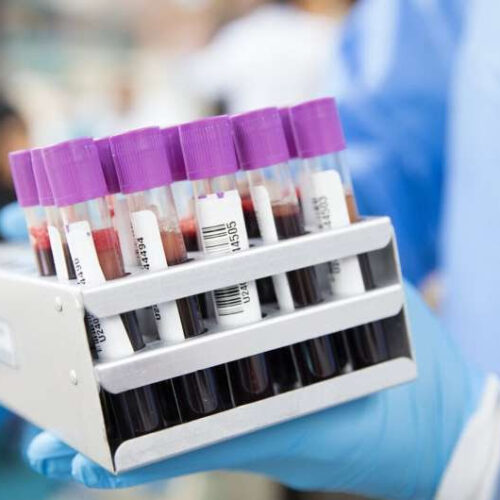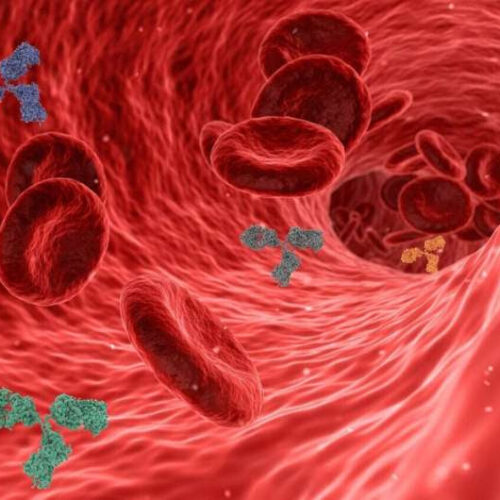by The Spanish National Cancer Research Centre Credit: Pixabay/CC0 Public Domain Multiple myeloma is a type of cancer that affects plasma cells, the blood cells involved in the production of antibodies. It is the second most common hematologic cancer, accounting for 2% of all cancers of hematologic origin. Multiple myeloma is usually treated with a...
Tag: <span>treatment</span>
A new therapeutic strategy to improve treatment of aggressive endometrial cancer
UNIVERSITAT AUTONOMA DE BARCELONA Endometrial cancer is the most common type of gynecological cancer and is the fourth most common type of tumor in women in developed countries. Although it has a good prognosis if detected early, advanced and aggressive cases have a high mortality rate and are often resistant to standard chemotherapy treatments. Now,...
Making glioblastoma more vulnerable to treatment
by Medical College of Georgia at Augusta University Dr. Waaqo Daddacha. Credit: Michael Holahan, Augusta University In the tough war against glioblastoma, scientists are taking a cue from viruses on how to make the aggressive cancer more vulnerable to treatment. Their target is SAMHD1, a protein which can protect us from viral infections by destroying an essential...
Structure of adult brain, previously thought to be fixed, is changed by treatment
by European College of Neuropsychopharmacology Representative map of the affected connections in the brain. The number of these connections increased after treatment. Credit: Jonathan Repple Scientists believe that the structure of the adult brain is generally rigid and incapable of rapid changes; now new work has shown that this is not true. German researchers have...
Symptoms, quality of life important to guide treatment for peripheral artery disease (PAD)
by American Heart Association Credit: Pixabay/CC0 Public Domain For the approximately 8.5 million people in the U.S. living with peripheral artery disease (PAD—pronounced P-A-D), which is narrowed or clogged arteries in the legs, treatment decisions and criteria for success should be led by their symptoms and self-reported quality of life, according to a new American...
Surprise discovery redirects efforts for treatment of liver disease
by Walter and Eliza Hall Institute of Medical Research Graphical abstract. Credit: Gastroenterology (2022). DOI: 10.1053/j.gastro.2022.08.040 WEHI researchers have revealed that common liver diseases are not driven by inflammatory cell death as previously thought, resolving a long-standing controversy in gastroenterology and pointing to a new direction for treatment. The research team studied liver diseases that affect billions...
Updated guideline introduces recommendations for prevention and treatment of glucocorticoid-induced osteoporosis
by American College of Rheumatology Credit: CC0 Public Domain The American College of Rheumatology (ACR) released a summary of its updated guideline for the Prevention and Treatment of Glucocorticoid-Induced Osteoporosis. Many patients take glucocorticoids for a variety of inflammatory conditions, and anyone who is taking glucocorticoid medications and has other risk factors for osteoporosis increases...
New technology offers pathways to finding treatments for kidney disease
by Beth Miller, Washington University in St. Louis Researchers from McKelvey School of Engineering and the School of Medicine have created a technology that shows them how changes to the kidney associated with diabetes and elevated blood sugar affect the mechanical function of podocytes and their ability to recover, which has potential toward finding new treatments...
Genetic discovery could improve treatment of colorectal cancer
by Rémi Carlier, Ecole Polytechnique Federale de Lausanne POU5F1B differs from OCT4. a Representative immunofluorescence–confocal microscopy of POU5F1B-HA overexpressing SW480 cells, with DAPI in blue, HA in pink, and the nuclear membrane marker lamin-B1 in green. Two fields out of eight are shown. b Immunohistochemistry for endogenous POU5F1B in adjacent normal colon and primary colon...
Controlling a gene that controls cells’ ability to contract could provide treatment for retinal diseases
by Karl Guido, Universitaet Tübingen Graphical abstract. Credit: Circulation Research (2022). DOI: 10.1161/CIRCRESAHA.122.321109 A University of Tübingen team has discovered how malformations of the blood vessels can occur in mice—yielding information with possible ramifications for retinal disease The heart pumps blood through the vascular system, supplying cells with oxygen and energy. Smooth muscle cells in the vessels finely...








